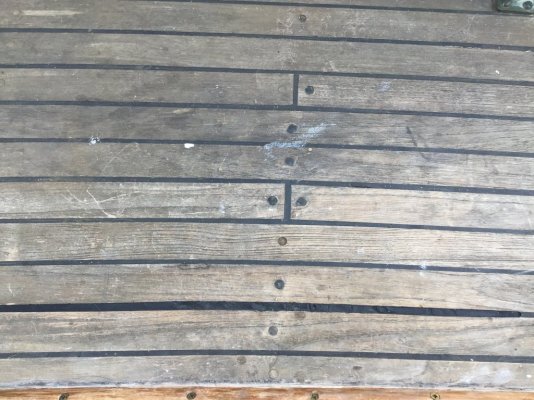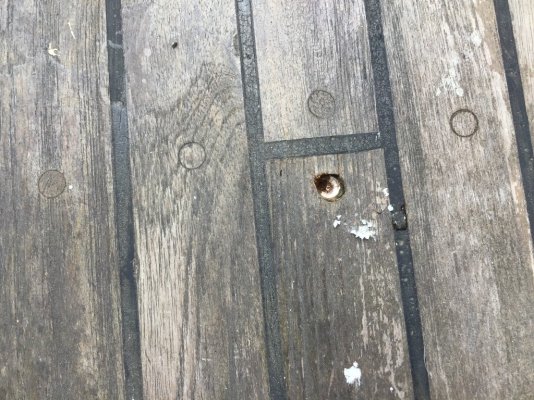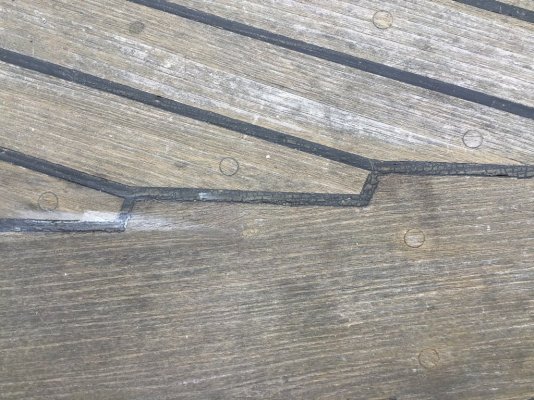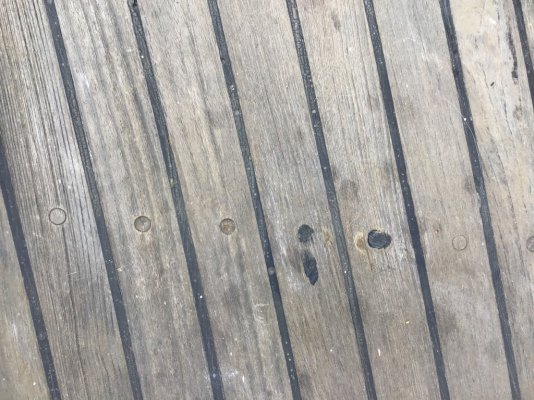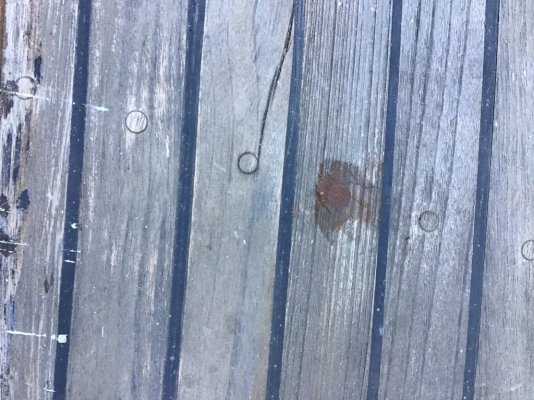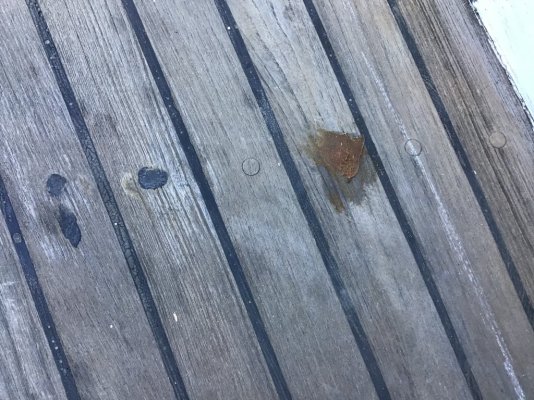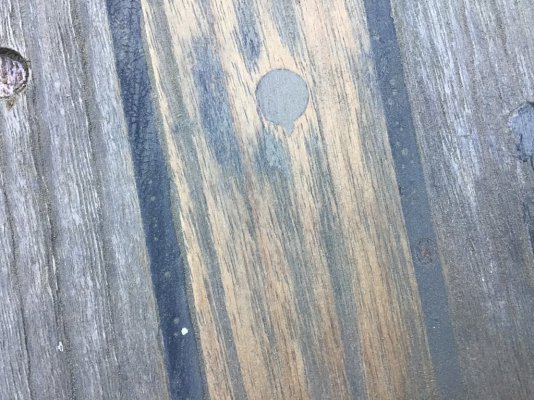Hello all, starting you cipher on how to go about refurbishing the teak deck on my boat. Previous owners thought that filling the holes with epoxy and or black deck caulking was the way to go when the bungs came out, so the deck is full of this type repair.
I’ve drilled down to either a screw or nail, and appears it’s a nail? For sure not a Phillips head, and I believe there bronze. Can anyone confirm either a screw or nail?
And even putting a punch on the head and drilling, the drill wants to travel off the head sideways. Really would like to fill the epoxied holes with bungs, but can’t seem to figure a good way the get the screw/ nail out.
There are many areas were the black caulk is needing repaired or the whole deck done. I’ve done some small areas we’re it was real bad, mainly for practise. Pretty tough pulling the stuff out, bought the tool for the job, but have to be real careful, as it jumps out and gouges the teak.
Not to interested in showroom quality deck, just serviceable and leak proof. I just drill to the screw/nail head, epoxy in new bung, would that be sufficient. Seems the old teak is still plenty thick.
Thanks for any input, much appreciated.
I’ve drilled down to either a screw or nail, and appears it’s a nail? For sure not a Phillips head, and I believe there bronze. Can anyone confirm either a screw or nail?
And even putting a punch on the head and drilling, the drill wants to travel off the head sideways. Really would like to fill the epoxied holes with bungs, but can’t seem to figure a good way the get the screw/ nail out.
There are many areas were the black caulk is needing repaired or the whole deck done. I’ve done some small areas we’re it was real bad, mainly for practise. Pretty tough pulling the stuff out, bought the tool for the job, but have to be real careful, as it jumps out and gouges the teak.
Not to interested in showroom quality deck, just serviceable and leak proof. I just drill to the screw/nail head, epoxy in new bung, would that be sufficient. Seems the old teak is still plenty thick.
Thanks for any input, much appreciated.

